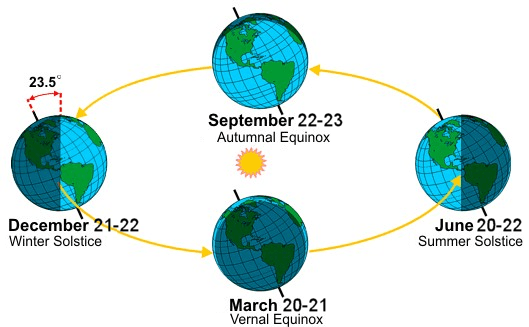Spring in 2014 has officially started after the Vernal Equinox at 12:57 p.m. EDT.
The equinox marks when the sun rises higher in the sky with each day after, until the peak at the Summer Solstice, which is approximately June 21.
There are nearly equal hours of day and night on and around the equinox because of refraction of sunlight, or a bending of the light’s rays that causes the sun to appear above the horizon when the actual position of the sun is below the horizon, according to the National Weather Service. Additionally, the days become a little longer at the higher latitudes (those at a distance from the equator) because it takes the sun longer to rise and set.
On the equinox and before and after for several days, the length of day will range from 12 hours and six minutes to 12 hours and 16 minutes.
(NOAA)
The change of seasons happens as the Earth makes a complete revolution aroung the sun once every 365 days.
The orbit is elliptical in shape, meaning that the distance between the Earth and the sun varies throughout the year.
“During the first week in January, the Earth is about 1.6 million miles closer to the sun,” the National Weather Service says. “This is referred to as the perihelion. The aphelion, or the point at which the Earth is about 1.6 million miles farther away from the sun, occurs during the first week in July.
“This fact may sound counter to what we know about seasons in the Northern Hemisphere, but actually the difference is not significant in terms of climate and is NOT the reason why we have seasons. Seasons are caused by the fact that the Earth is tilted on its axis by 23.5°. This can be seen graphically in the picture below from NASA.”





